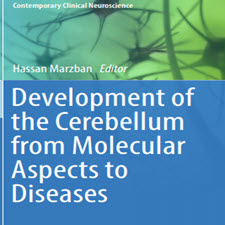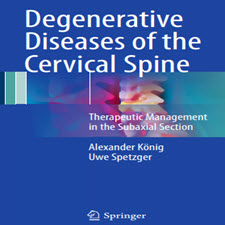Comorbidity in Rheumatic Diseases
ABSTRACT
Comorbidity is a condition that coexists along with the disease of interest. Comorbidities could be related to the primary disease, its treatment, or be completely independent. Comorbidities could also be a historic medical condition that is presently active or inactive. The relationship between rheumatic diseases and comorbidities is intriguing in that whereas certain comorbidities occur more frequently in rheumatic diseases, the rheumatic diseases and their treatments could themselves lead to some of these comorbidities. Higher prevalence of comorbidities in rheumatic disease patients compared with those without rheumatic disease could be partly due to a higher inflammatory burden, an overlapping pathophysiology with rheumatic diseases, or increased prevalence as a result of frequent monitoring and screening, and improved survival among these patients. An example of this would be the higher incidence and prevalence of cardiovascular disease (CVD) and traditional cardiovascular (CV) risk factors like dyslipidemia, diabetes and insulin resistance in rheumatoid arthritis (RA), and systemic lupus erythematosus (SLE). Another example would be systemic sclerosis (SSc)-related lung involvement or lupus nephritis where early recognition and management of these disease-related complications has a potential to improve survival. While recent advances have been invaluable to the therapeutic armamentarium of rheumatic diseases, long-term treatment-related risks like infection and malignancy have emerged as concerns. The use of medications like disease-modifying antirheumatic drugs (DMARDs), nonsteroidal anti-inflammatory drugs (NSAIDs), and glucocorticoids for inflammatory arthritis also contribute to comorbidities.
INTRODUCTION
CVD-related mortality is known to be high in patients with rheumatic diseases. This has been studied in detail in RA and SLE. While RA has a twofold increased overall mortality, with CVD being the leading cause of death in RA patients , SLE has a bimodal peak of mortality – once during younger age due to the disease and its complications and then again while older secondary to atherosclerotic coronary artery disease (CAD) . A meta-analysis of 24 observational studies of CVDrelated mortality in patients with RA reported a 50%, 59%, and 52% increased risk of CVD, ischemic heart disease, and cerebrovascular accident (CVA) death, respectively . RA patients are twice as likely to experience unrecognized myocardial infarctions and sudden death . While CVD mortality appears to be declining over recent years in RA, the overall gap between CVD risk in RA and the general population seems to be widening .
چکیده
همراهی یک بیماری است که همراه با بیماری مورد علاقه همسو می شود. همراهی با بیماری اولیه، درمان آن یا کاملا مستقل باشد. همپوشانی می تواند یک وضعیت پزشکی تاریخی باشد که در حال حاضر فعال یا غیرفعال است. رابطه بین بیماری های روماتیسمی و بیماری های همودینامانه جالب است که در حالی که برخی از بیماری های مرتبط با هم در بیماری های روماتیسمی رخ می دهد، بیماری های روماتیسمی و درمان های آنها می تواند به برخی از این بیماری های همراه منجر شود. شیوع بیشتر بیماری های مشترک در بیماران مبتلا به بیماری های روماتیسمی در مقایسه با افرادی که بیماری های روماتیسمی ندارند، می تواند تا حدی ناشی از باروری بالاتری باشد، پاتوفیزیولوژی همپوشانی با بیماری های روماتیسمی یا افزایش شیوع آن در نتیجه نظارت و غربالگری مکرر و بهبود وضعیت بقا در میان این بیماران. یک مثال از این می تواند بروز و شیوع بیماری های قلبی-عروقی (CVD) و عوامل خطر سنتی قلبی-عروقی (CV) مانند دیس لیپیدمی، دیابت و مقاومت به انسولین در آرتریت روماتوئید (RA) و سیستم لوپوس اريتماتوس (SLE) باشد. به عنوان مثال یکی دیگر از بیماری های سیستمیک اسکلروز (SSc) مربوط به دخالت ریه یا نفریت لوپوس است که در آن تشخیص زودهنگام و مدیریت این عوارض مرتبط با بیماری بالقوه برای بهبود بقا است. در حاليکه پيشرفتهاي اخير در ارتقاي سلامت رواني بيماري هاي روماتيسم بسيار ارزشمند بوده است، خطرات مربوط به درمان طولاني مدت مانند عفونت و بدخيمي به عنوان نگراني مطرح مي شود. استفاده از داروهایی مانند داروهای ضد رماتیسمی اصلاح کننده بیماری (DMARDs)، داروهای ضد انعقادی غیر استروئیدی (NSAID ها) و گلوکوکورتیکویدها برای آرتریت آتروماتاتی نیز به همراه بیماری کمک می کند.
مقدمه
مرگ و میر مرتبط با CVD در بیماران مبتلا به بیماری های روماتیسمی بالاست. این در جزئیات RA و SLE مورد مطالعه قرار گرفته است. در حالی که RA دو برابر مرگ و میر کلی افزایش یافته است و CVD علت اصلی مرگ در بیماران مبتلا به RA است، SLE دارای دوزهای بالایی از مرگ و میر است – یک بار در سن جوانتر به علت بیماری و عوارض آن و پس از آن دوباره در حالی که قدیمی تر به شرط عروق کرونر آترواسکلروتیک بیماری (CAD). تجزیه و تحلیل متا 24 مطالعات مشاهده شده در مورد مرگ و میر CVD در بیماران مبتلا به RA گزارش شده است که 50٪، 59٪ و 52٪ خطر ابتلا به بیماری قلبی عروقی، بیماری ایسکمیک قلبی و مرگ مغزی (CVA) را افزایش داده است. بیماران RA دو برابر بیشتر از احتمال بروز انفارکتوس میوکارد غیر قابل تشخیص و مرگ ناگهانی هستند. در حالی که در سالهای اخیر RA در مقایسه با مرگ و میر ناشی از CVD کاهش یافته است، شکاف کلی بین خطر ابتلا به CVD در RA و جمعیت عمومی به نظر می رسد افزایش می یابد.
Year: 2016
Publisher: SPRINGER
By : Yasser El Miedany
File Information: English Language/ 439 Page / size: 4.97 MB
سال : 1395
ناشر : SPRINGER
کاری از : یاسر ال میدیانی
اطلاعات فایل : زبان انگلیسی / 439 صفحه / حجم : MB 4.97


![Comorbidity.in.Rheumatic.Diseases.[taliem.ir]](https://taliem.ir/wp-content/uploads/Comorbidity.in_.Rheumatic.Diseases.taliem.ir_.jpg)
![Clinical Management of[taliem.ir] Clinical Management of[taliem.ir]](https://taliem.ir/wp-content/uploads/Clinical-Management-oftaliem.ir_.jpg)
![The role of major depression in neurocognitive[taliem.ir] The role of major depression in neurocognitive[taliem.ir]](https://taliem.ir/wp-content/uploads/The-role-of-major-depression-in-neurocognitivetaliem.ir_.jpg)
![Diseases.of.the.Chest.and.Heart.2015–2018.[taliem.ir] Diseases.of.the.Chest.and.Heart.2015–2018.[taliem.ir]](https://taliem.ir/wp-content/uploads/Diseases.of_.the_.Chest_.and_.Heart_.2015–2018.taliem.ir_.jpg)
![Pathogenesis.of.Periodontal.Diseases.Biological.[taliem.ir] Pathogenesis.of.Periodontal.Diseases.Biological.[taliem.ir]](https://taliem.ir/wp-content/uploads/Pathogenesis.of_.Periodontal.Diseases.Biological.taliem.ir_.jpg)


![Pediatric.Demyelinating.Diseases.[taliem.ir] Pediatric.Demyelinating.Diseases.[taliem.ir]](https://taliem.ir/wp-content/uploads/Pediatric.Demyelinating.Diseases.taliem.ir_.jpg)
![Vascular.Diseases.for.the.Non-Specialist.An.Evidence-Based.Guide.[taliem.ir] Vascular.Diseases.for.the.Non-Specialist.An.Evidence-Based.Guide.[taliem.ir]](https://taliem.ir/wp-content/uploads/Vascular.Diseases.for_.the_.Non-Specialist.An_.Evidence-Based.Guide_.taliem.ir_.jpg)
![Dermatological.Atlas.of.Indigenous.People.[taliem.ir]](https://taliem.ir/wp-content/uploads/Dermatological.Atlas_.of_.Indigenous.People.taliem.ir_-150x150.jpg)
![Neuroepigenomics.in.Aging.and.Disease.[taliem.ir]](https://taliem.ir/wp-content/uploads/Neuroepigenomics.in_.Aging_.and_.Disease.taliem.ir_-150x150.jpg)
دیدگاه خود را ثبت کنید
تمایل دارید در گفتگو شرکت کنید؟نظری بدهید!